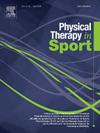青少年肩部稳定后重返运动的心理准备与自我报告的功能之间的关系
IF 2.2
3区 医学
Q1 REHABILITATION
引用次数: 0
摘要
目的探讨青少年肩部稳定术后重返运动(RTS)时基于术前危险因素的心理准备和自我报告功能的差异。我们的第二个目的是评估术前肩部不稳定史与RTS测试时的心理准备之间的关系。设计:多中心回顾性横断面研究。SettingPediatric医院。参与者:52名参与者(65%男性;16.5±1.3岁;术后5.9±1.0个月)。主要观察指标:肩不稳定性损伤后恢复运动量表(SI-RSI),臂、肩、手快速失能(QuickDASH),术前不稳定性发作次数。结果RTS测试时SI-RSI评分中位数为75.4 IQR(62.5-88.3)。女性报告的SI-RSI得分明显低于男性(65.0,IQR: 50.9-79.2 vs 77.9, IQR: 65.7-90.1;p = 0.034)。不稳定事件大于3次的患者与不稳定事件1次或2次的患者相比,SI-RSI评分无显著差异(p = 0.866)。SI-RSI与QuickDASH评分呈中度负相关(r = - 0.51, p = 0.001)。结论肩关节稳定手术后男性和女性在RTS时的心理准备存在差异。术前不稳定史与RTS测试时的SI-RSI评分无关,但SI-RSI评分与主观功能有关。本文章由计算机程序翻译,如有差异,请以英文原文为准。
Association between psychological readiness to return to sport and self-reported function in adolescents after shoulder stabilization
Objectives
To examine differences in psychological readiness and self-reported function based on pre-operative risk factors at time of return to sport (RTS) after adolescent shoulder stabilization. Our secondary purpose was to assess the relationship between pre-operative shoulder instability history and psychological readiness at time of RTS testing.
Design
Multi center retrospective cross-sectional study.
Setting
Pediatric hospital.
Participants
52 participants (65 % male; 16.5 ± 1.3 years old; 5.9 ± 1.0 months post-surgery).
Main outcome measures
Shoulder Instability Return to Sport after Injury scale (SI-RSI), Quick-Disabilities of Arm, Shoulder, Hand (QuickDASH), number of pre-operative instability episodes.
Results
Median SI-RSI score was 75.4 IQR (62.5–88.3) at time of RTS testing. Females reported significantly lower SI-RSI scores compared to males (65.0, IQR: 50.9–79.2 vs 77.9, IQR: 65.7–90.1; p = 0.034). There were no significant differences in SI-RSI scores in patients with greater than 3 instability events compared to patients with 1 or 2 instability events (p = 0.866). SI-RSI and QuickDASH scores displayed a moderate negative correlation (r = −0.51, p = 0.001).
Conclusion
Males and females after shoulder stabilization surgery report differences in psychological readiness at time of RTS. Pre-operative instability history was not related to SI-RSI scores at time of RTS testing, but SI-RSI scores are related to subjective function.
求助全文
通过发布文献求助,成功后即可免费获取论文全文。
去求助
来源期刊

Physical Therapy in Sport
医学-康复医学
CiteScore
4.50
自引率
8.30%
发文量
125
审稿时长
39 days
期刊介绍:
Physical Therapy in Sport is an international peer-reviewed journal that provides a forum for the publication of research and clinical practice material relevant to the healthcare professions involved in sports and exercise medicine, and rehabilitation. The journal publishes material that is indispensable for day-to-day practice and continuing professional development. Physical Therapy in Sport covers topics dealing with the diagnosis, treatment, and prevention of injuries, as well as more general areas of sports and exercise medicine and related sports science.
The journal publishes original research, case studies, reviews, masterclasses, papers on clinical approaches, and book reviews, as well as occasional reports from conferences. Papers are double-blind peer-reviewed by our international advisory board and other international experts, and submissions from a broad range of disciplines are actively encouraged.
 求助内容:
求助内容: 应助结果提醒方式:
应助结果提醒方式:


